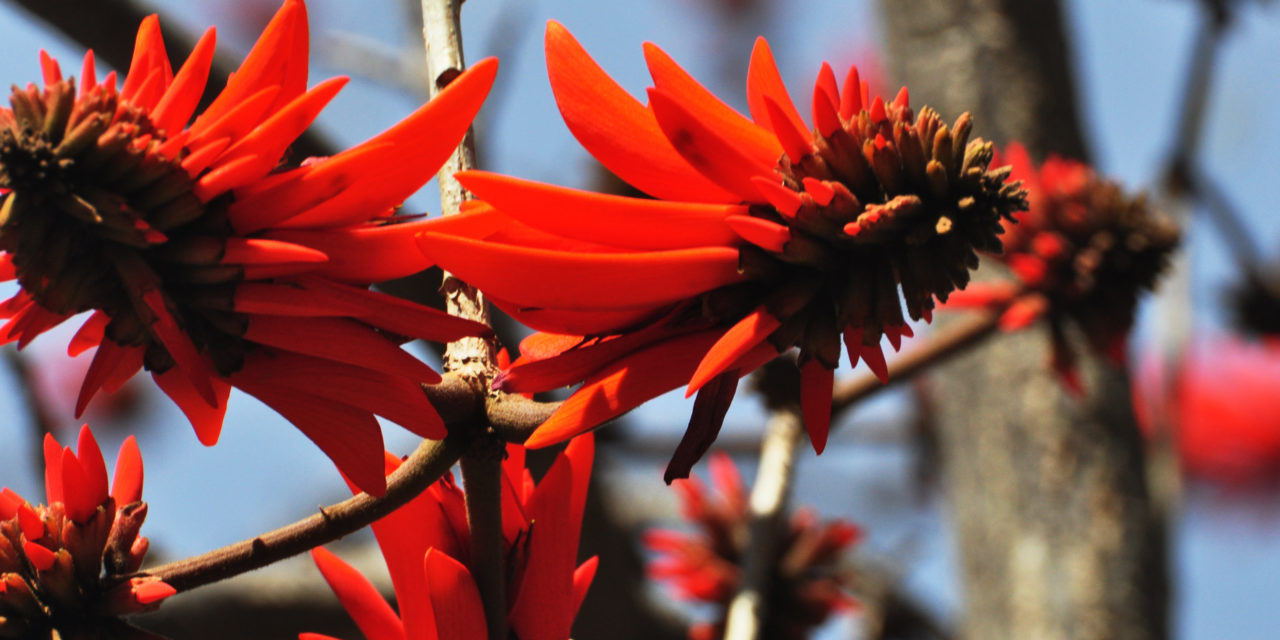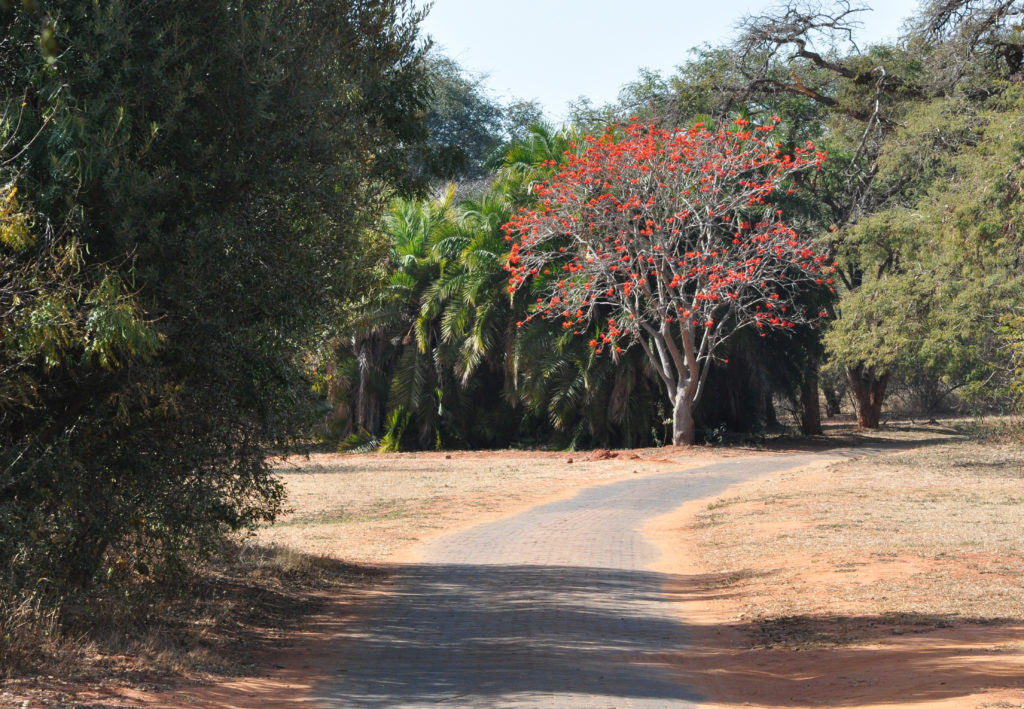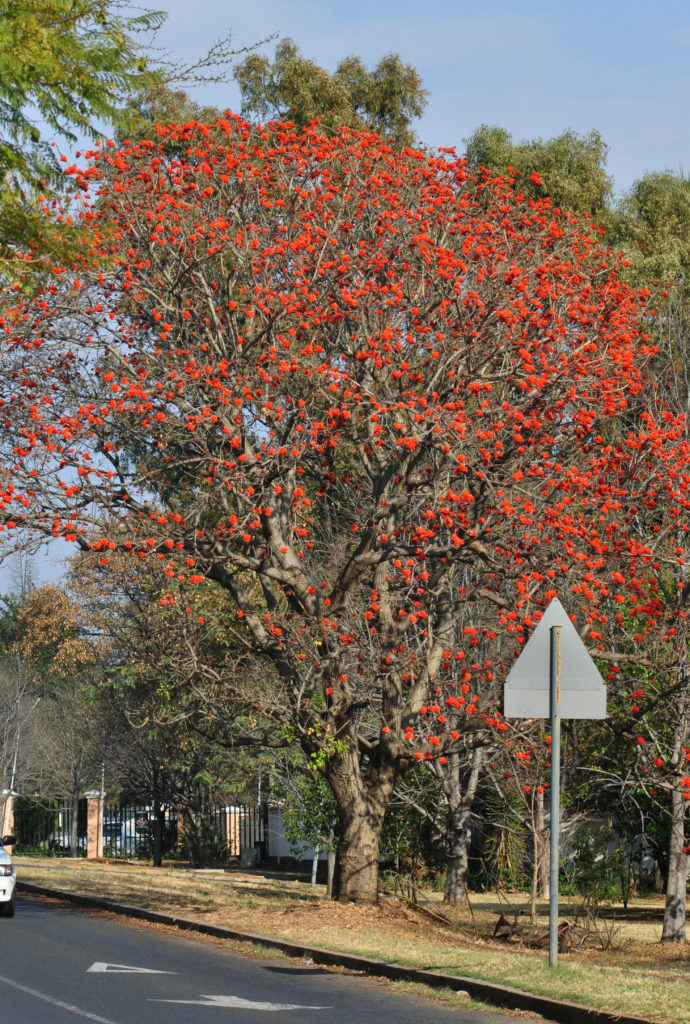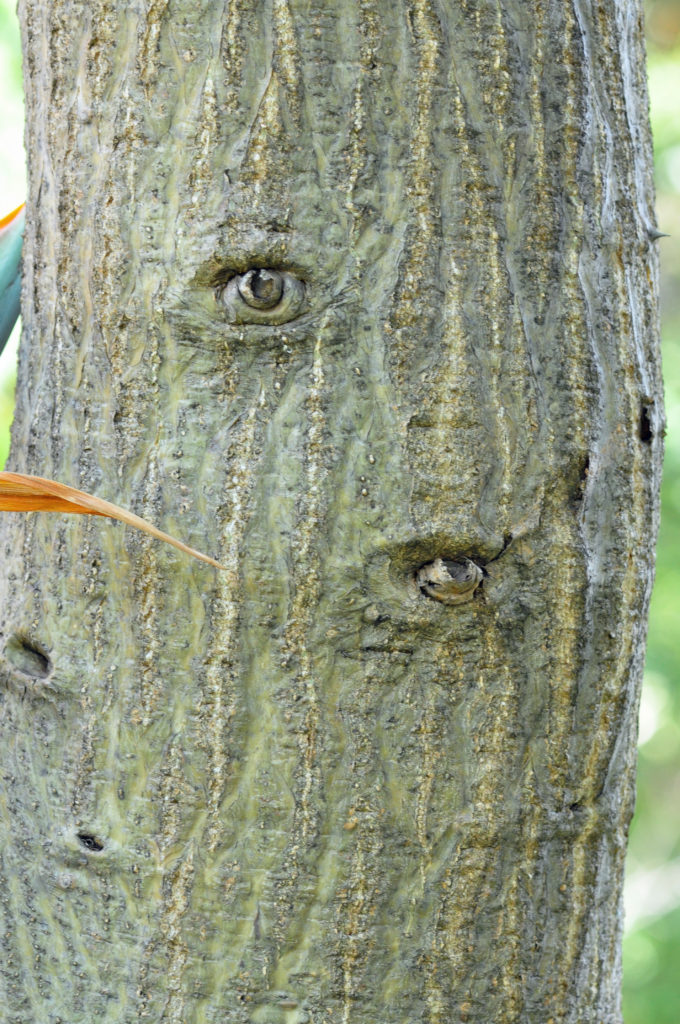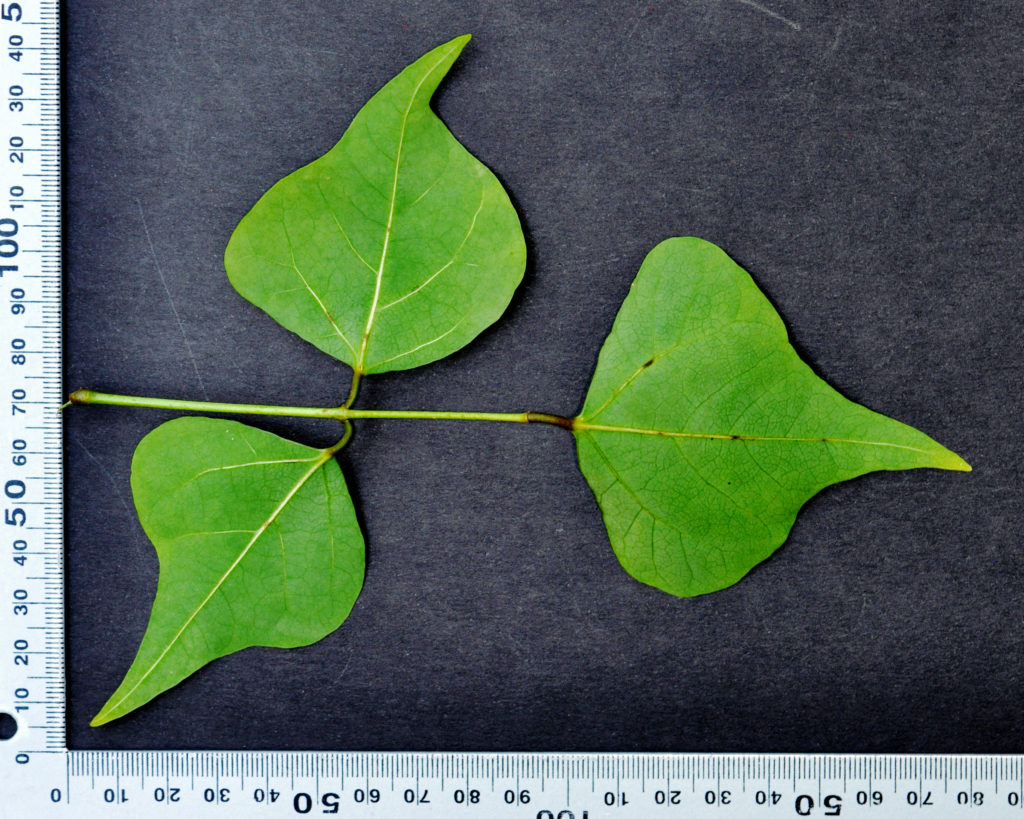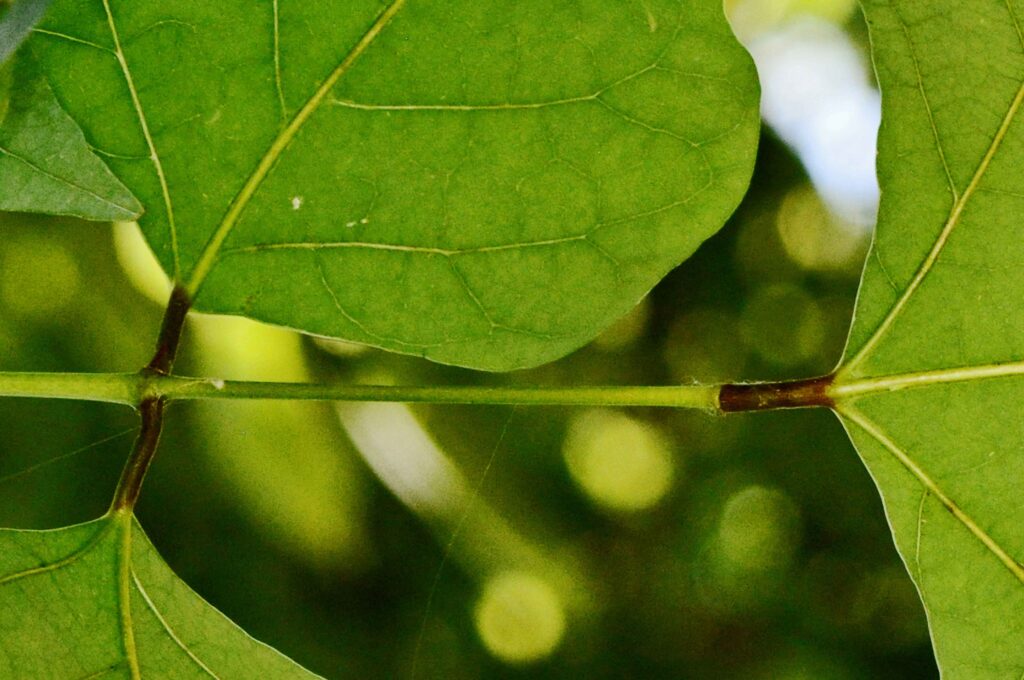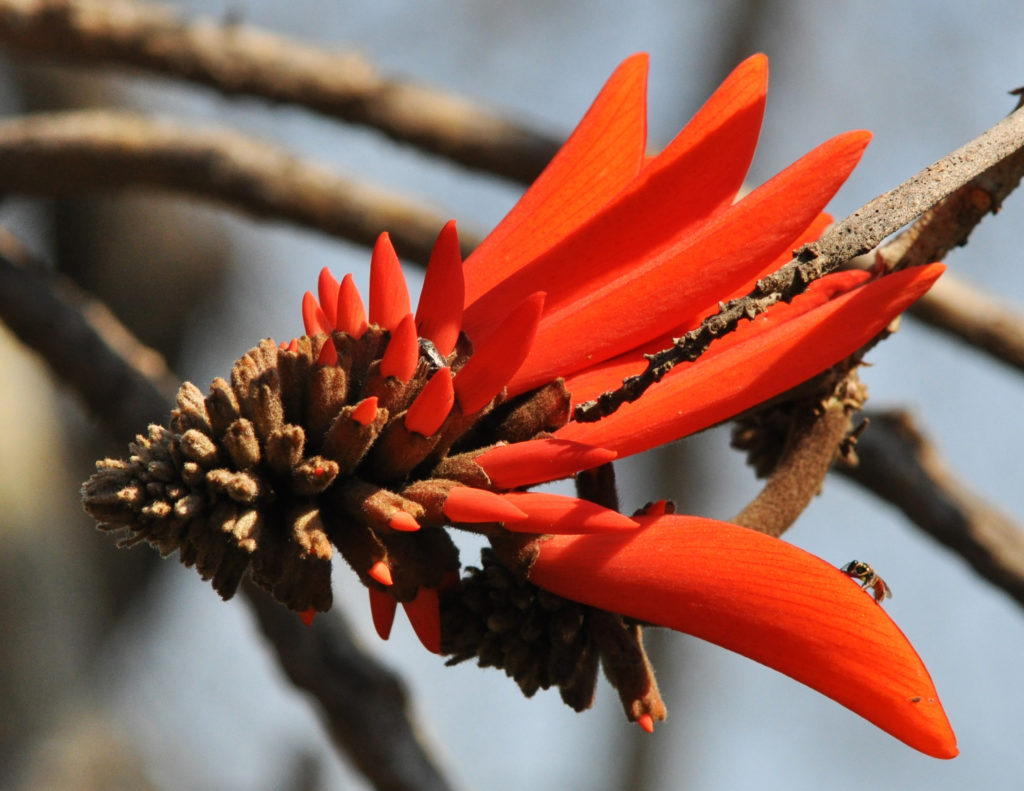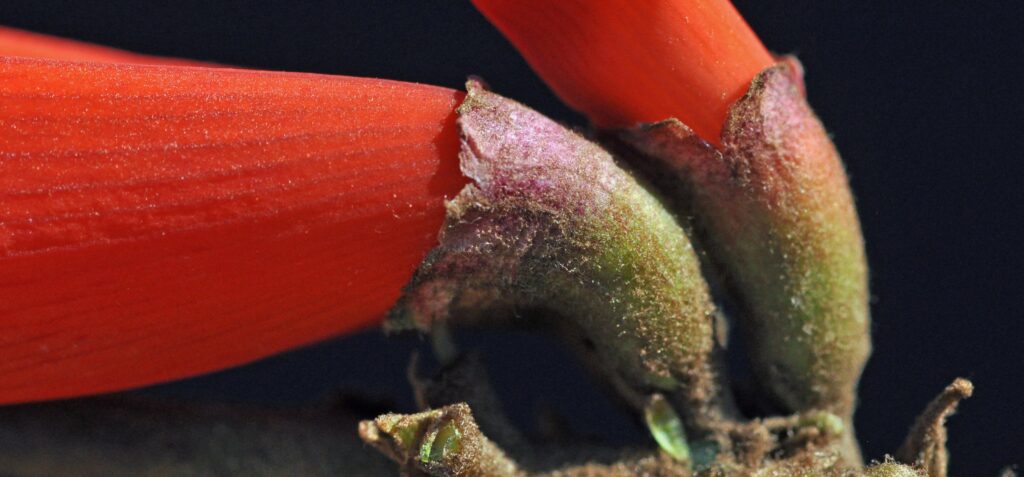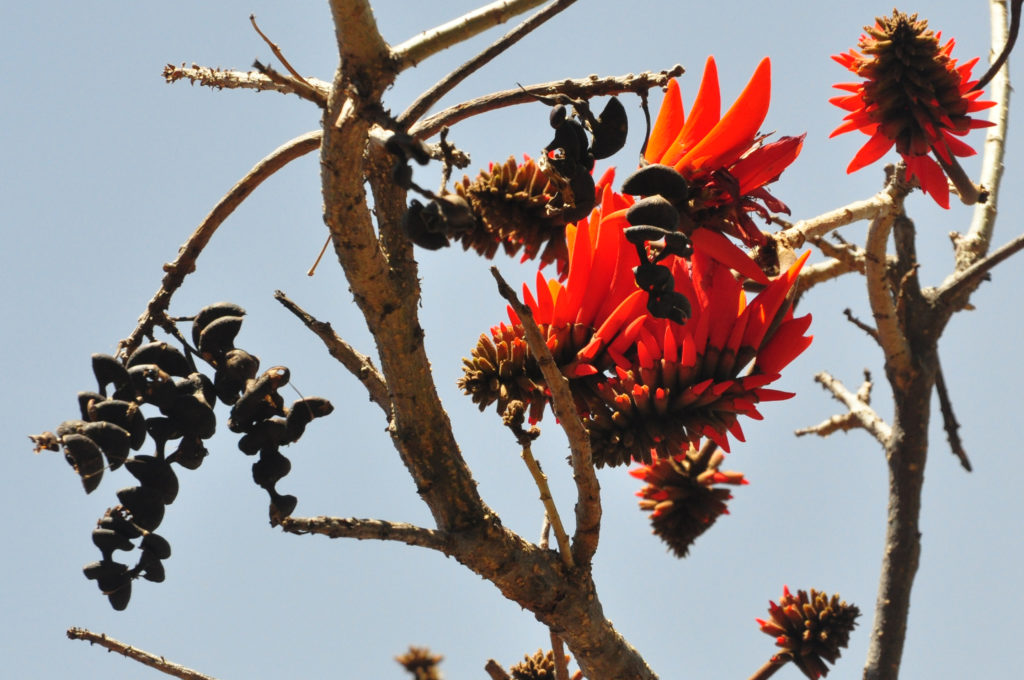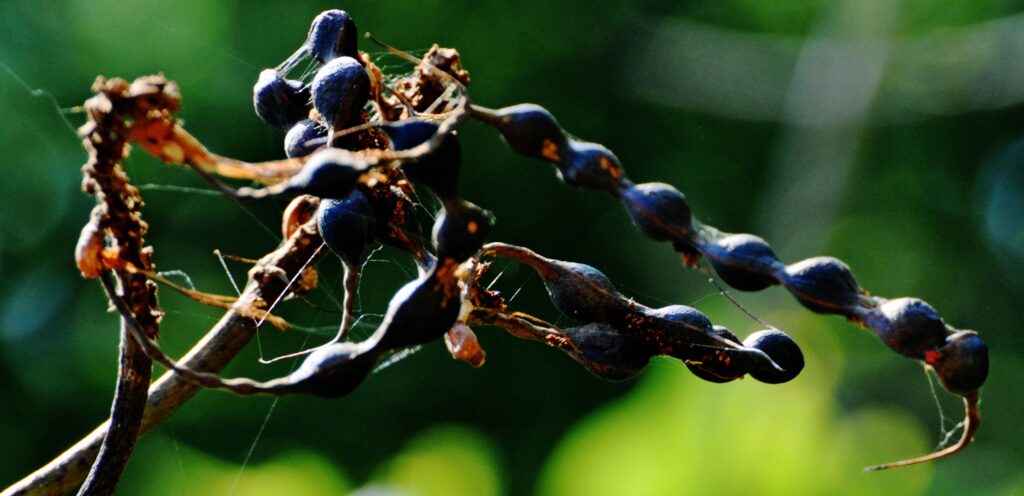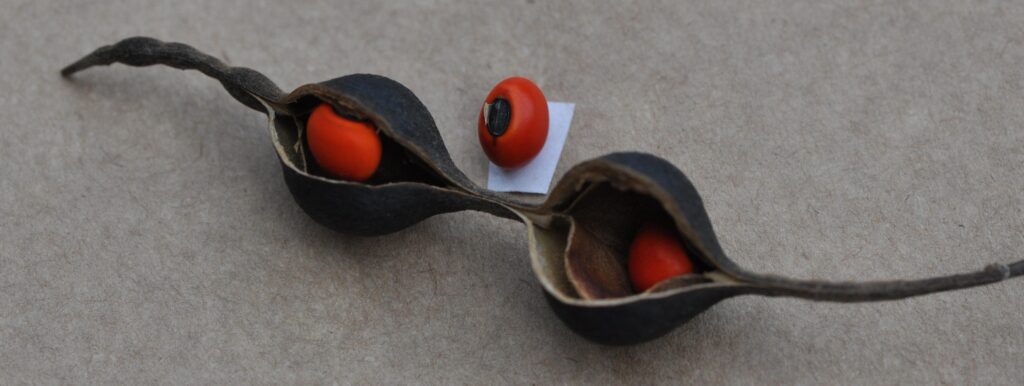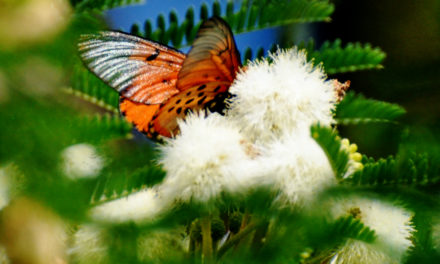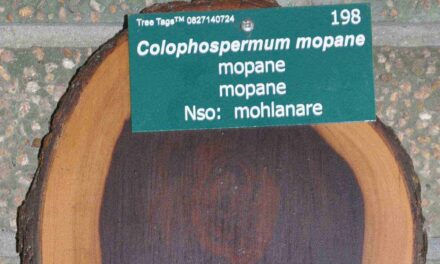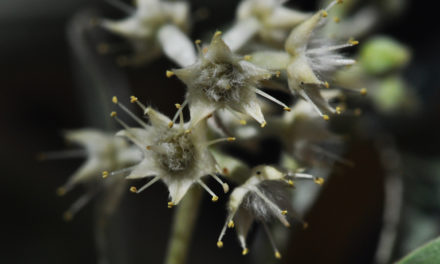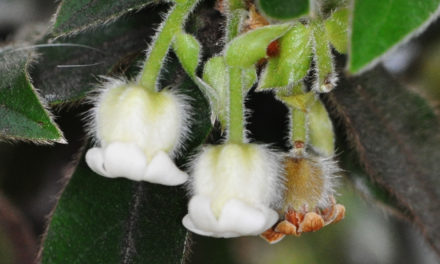General Info – summary
This deciduous Tree with its grey-brown bark and low down, thorny branches is up to 12m high. The hairless, trifoliate Leaves have leaflets with acuminate leaflets. The spectacular zygomorphic, bisexual and usually scarlet Flowers are in racemes. The vexillum completely covers the other petals, stamens and the single pistil. Fruit is a markedly constricted and dehiscent pod. The red seeds have a black hilum.
Description
Erythrina lysistemon
Previous Name: Erythrina caffra var. mossambicensis.
SA Tree No. 245.
Common names: (Afr) Gewone Koraalboom, Kanniedood, Koraalboom. (Eng) Common Coral Tree, Coral Tree, Lucky Bean Tree, Sacred Coral Tree. (Northern Sotho) Mmalê, Mokhupye. (isiXhosa) Sintsi, Umkloka, Umsintsi, Umsintsana. (isiZulu) Umsinsi. (siSwati) Siphama, Umdvumbula, Umsinsi. (Setswana) Mophethe, Mophêthê, Nsisimbana. (Tshivenda) Muvhale.
Family: Fabaceae, or Leguminosae (Pea, bean or legume family). After the Orchidaceae and the Asteraceae, the Fabaceae is the third largest Angiosperm (flowering plants) family with 700+ genera and close to 20 000 species. Local Tree genera on this website include Acacia (Vauchellia, Senegalia), Albizia, Bauhinia, Bolusanthus, Burkea, Calpurnia, Colophospermum, Cordyla, Cyclopia, Dichrostachys, Erythrina, Erythrophleum, Faidherbia, Indigofera, Mundulea, Peltophorum, Philenoptera, Piliostigma, Schotia and Xanthocercis. The Fabaceae are recognisable by their fruit and by their pinnately compound Leaves. Leaves may also be simple – even bilobed and usually have stipules – some of which may be spinescent. Leaflets are usually entire. Flowers are bisexual and bracteate. Regular flowers usually have 4-5 sepals and the same number of petals. Irregular flowers have 4-5 sepals and 5 or less petals. Stamens have anthers that have 2 pollen sacs and there are usually at least twice the number of stamens as petals – often 10. The superior Ovary has 1 locule containing 1 or more ovules. The Stigma and Style are simple. The single carpel develops into the Fruit, which is usually a pod. The fallen pods may break into segments. Seeds vary.
Name derivation: Erythrina from the Greek “erythros” meaning red. This may apply to the flowers and /or the seeds. lysistemon – refers to the 1 of 10 free stamens.
Conservation: National Status: L C. (Least Concern). Assessment: 2005 (W. Foden and L. Potter).
Tree
The stocky and thickset Tree (photo 1002) is up to 12m high (shorter than E. caffra) and has a spreading crown (photo 371). It has thorny branches that start fairly low down. The pale grey, to grey-brown Bark is rather smooth but not corky. It may be shallowly-longitudinally grooved (photo 635). Scattered hooked prickles are often present. Young green stems turn grey and have curved prickles. The Branches and leaves are similar to those in Erythrina caffra.
- 371. 2017/08/03. Pretoria NBG. Photo: David Becking.
- 1002. 2014/08/19. Northcliff. Photo: David Becking.
- 635. 2014/10/30. Pretoria NBG. Photo: David Becking.
Leaves
This deciduous tree may be without Leaves for several months. The alternate, hairless leaves are up to 23cm long (including the leaf stalk) and are trifoliate (compound leaves with 3 leaflets – photo 643). The central Leaflet is up to 12 x 9cm and slightly bigger than the remaining two. The leaflets are roughly ovate and may be slightly cordate (heart shaped). The leaflets have an elevated midrib and lateral veins that are visible on the lower side (photo 637). Scattered hooked prickles may be visible on the petiole (leaf stalk), rachis (extension of the petiole) and midrib. The tapering Apex is usually acuminate (said of an acute apex whose sides are somewhat concave and taper to a protracted point – photo 643). The asymmetrical (not equal to the opposite side) square to broadly tapering leaflet Bases usually have 3 veins arising from them (photo 643). The Petiole (leaf stalk) is up to 16cm long. Short Petiolules (stalks of leaflets) are present and are distinctly darker (photo 637) than the Rachis (main axis bearing leaflets). Two long glands may be visible at the base of the leaflets.
- 643. 2014/10/30. Pretoria NBG. Photo: David Becking.
- 637. 2014/10/30. Pretoria NBG. Photo: David Becking.
Flowers
The usually brilliant scarlet Flowers (with no tinge of orange) generally appear before the new leaves. Occasionally flowers are white or pink. Flowers are in almost horizontal Racemes (a simple elongated inflorescence with stalked flowers that open in succession towards the apex – photo 70). Individual flowers are bisexual and zygomorphic (irregular, with the corolla divisible into 2 equal halves in one plane only). The shallowly 5-lobed Calyx sepals become reddish brown (photo 103). The Vexillum (standard Petal – the uppermost one) is strongly folded and is longer and narrower than that of E. caffra, but unlike the latter, it encloses the stamens and prevents them from protruding and having a “whiskery” appearance. The long vexillum also encloses the remaining petals i.e. the 2 winged and the 2 joined keel petals. If the petals are carefully removed, the 9 joined stamens and the free tenth stamen can be seen. The Pollen is released through longitudinal slits in the uniform Anthers, which do not extend beyond the vexillum. A single Pistil (a unit of the Gynoecium, the female element of the flower, which is composed of the Ovary, Style and Stigma). Here the red incurved Style is terete (circular in cross-section), extends beyond the anthers and ends in a small, yellowish, terminal Stigma (photo 97). The stalked, superior Ovary contains the Ovules. (Jun-Oct). In E. caffra flowers usually have more of an orange tinge, with the protruding stamens giving it a whiskery look, and the standard petal is both shorter and wider.
- 70. 2018/08/18. Pretoria NBG. Photo: David Becking.
- 103. 2019/09/12. Pretoria NBG. Photo: David Becking.
- 97. 2019/09/12. Pretoria NBG. Photo: David Becking.
Fruit
The hairless, dehiscent and cylindrical Fruit is an up to 15cm long narrow Pod (a dry, dehiscent fruit). At maturity, the pod turns black and hangs in sickle clusters (photo 557). Like E. caffra, pods are markedly constricted between seeds (photo 640). In this photo, the remains of the styles are clearly visible. The Seeds are bright red with a noticeable black area around the Hilum (scar or mark left on the seed coat indicating the place of past attachment to the ovary wall – photo 48). (Sep-Mar).
- 557. 2016/08/23. Pretoria NBG. Photo: David Becking.
- 640. 2014/10/30 Pretoria NBG. Photo: David Becking.
- 640. 2014/10/30 Pretoria NBG. Photo: David Becking.
Distribution & Ecology
The Dead wood on the tree is soft and makes an ideal nesting places for some birds. E. caffra grows closer to the sea and under wetter conditions than E. lysistemon. The latter are especially common in dry coastal areas and in other areas of lower rainfall. They occur in the bushveld, wooded grasslands and on koppies (small, natural hills rising up from the flattish African veld) and kloofs (steep-sided, wooded ravines or valleys). The normal altitude range is up to 1 000m. In South Africa they occur in the Eastern Cape, KwaZulu-Natal, Mpumalanga e.g., in the Kruger National Park, Limpopo, North West, and Gauteng. (The southernmost range also overlaps that of E. caffra). They also occur in Swaziland, Botswana, Zimbabwe, Mozambique, Angola and northwards to Tanzania. Like E. caffra, the Flowers produce abundant nectar attracting birds, including the Scarlet chested and forest Olive Sunbirds, Orioles and Yellow weavers. The Brown-headed Parrots (Poicephalus cryptoxanthus) have a strong beak and are able to feed on the hard Seeds. Kudu, Black Rhino, Baboons and Klipspringers are among the animals that consume the Leaves. Vervet monkeys eat the flower Buds. Elephants, Black Rhinos and Baboons consume the Bark. Bushpigs eat the Roots. Pollinating agents include birds and bees (photo 70 – under Flowers). This is an ecologically important tree.
Ethnobotany
The low-density Wood is used for boat, float and shingle making. This is similar to E. caffra. The Seeds are called, “lucky bean seeds”. They contain alkaloids as well as blood-clotting substances and must not be consumed. Local people respect these trees and often plant them near graves. Trees are used in local medicine and for growing living fences. The tree is easily Propagated from seeds or cuttings and is a good garden prospect. The flowers will reward viewers if the trees are not subjected to severe sub-zero winter temperatures.
References
Boon, R. 2010. Pooley’s Trees of eastern South Africa. Flora and Fauna Publications Trust, Durban.
Burrows, J.E., Burrows, S.M., Lotter, M.C. & Schmidt, E. 2018. Trees and Shrubs Mozambique. Publishing Print Matters (Pty) Ltd. Noordhoek, Cape Town.
Coates Palgrave, M. 2002. Keith Coates Palgrave Trees of Southern Africa, edn 3. Struik, Cape Town.
Foden, W. & Potter, L. 2005. Erythrina lysistemon Hutch. National Assessment: Red List of South African Plants version 2020.1. Accessed on 2023/05/08.
Ginn, P.J. McIlleron, W.G. Milstein, S. 1989. The Complete Book of Southern African Birds. Struik Publishers (PTY) LTD. Third impression 1991.
Lawrence, G. H. M, 1951. Taxonomy of Vascular Plants. The Macmillan Company, New York. Tenth Printing 1965.
Palmer, E. & Pitman, N. 1972. Trees of southern Africa. Balkema, Amsterdam, Cape Town.
Schmidt, S. Lotter, M. & McCleland, W. 2002. Trees and Shrubs of Mpumalanga and the Kruger National Park.
van Wyk, B. & van Wyk, P. 1997 Field guide to Trees of Southern Africa. Struik, Cape Town.
https://en.wikipedia.org/wiki/Erythrina_lysistemon.
http://www.plantzafrica.com/plantefg/erythrinlysist.htm.
http://posa.sanbi.org/flora/browse.php?src=SP

